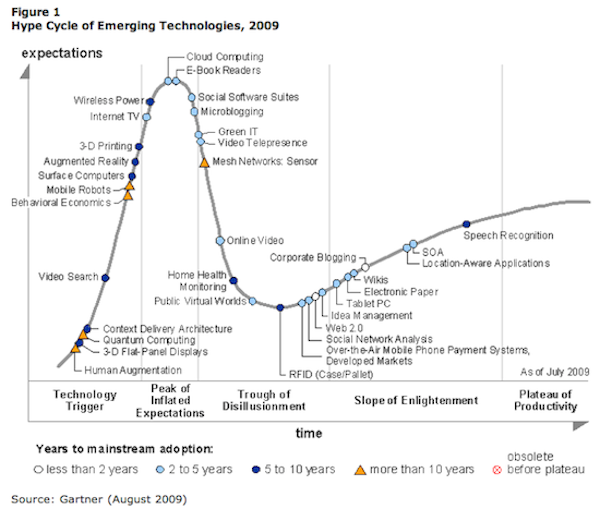Earlier today I ran into this great overview* of the plethora in B2B marketing technology platforms currently available. At the same time, to many this chart may well be an overwhelmingly intricate maze too.
Tomorrow is a special day to both Prince Prins Willem-Alexander and the Kingdom of the Netherlands. After a lifetime of preparation, he will start his new job as king. LinkedIn already properly congratulated our soon king to be to this career move as is shown below.
We live in an attention-economy or eyeball world, don’t we? According to Jim Stolze our information-inundated economy even suffers from ADHD, eg Attention Deficit Hyperdistribution.
How exciting is this for a message? See the below call to action…
Global analyst Gartner issues various annual hype cycles, including the famous one in Emerging Technologies. Whilst most reviews and blogs focus on the one ‘picture’ of this year’s hype cycle (sometimes without any reference to the year, eg Jeff Bullas’ weblog), I thought it’d be more interesting to draw a comparison between the 2009 hype cycle to the one that is valid up until June 2012. Here’s 5 items regarding both versions of Gartner’s Hype Cycle in emerging technologies that caught my eyes.
1) What happened to social media technologies?
Several social media technologies have moved off the Gartner hype cycle, which equals they have reached widespread adoption within 30% or more of the potential audience. Surveys by Accenture and Webmarketing123 however indicate B2B marketers are very slow in adopting social media technologies. It makes one wonder what the Hype Cycle would look like in business to business (B2B).
2) Speed of adopting technology goes up
When comparing the 2009 to 2011 hype cycles, the amount of emerging technologies that get adopted within a 2 year-timespan has more than doubled from 2 to 5 technologies. No exponential trend reminiscent of Moore’s Law yet. This is however a sign of some acceleration in overall emerging technology adoption.
3) Keeping track of technology over the years
The speed of adoption may have gone up somewhat. This to me does not explain why only some 9 emerging technologies[1] show up in both graphs. One of which interestingly has tracked back on the curve from 2009 to 2011, i.e. 3D bioprinting. All other emerging technologies shown in the current Gartner hype cycle valid up until July 2012 appear did not show up on Gartner’s radarscreen almost three years back. Either this would indicate they became obsolete before reaching their plateau. Or Gartner’s accuracy in predicting emerging technologies future life is simply deteriorating.
4) More emerging technologies
The very amount of ‘dots’ i.e. emerging technologies tracked in Gartner’s hype cycle has steadily grown almost by a quarter (up from 34 to 42 in 2 years’ time).
5) One overall Gartner hype cycle does not suffice in the longtail era
The significant differences between B2C vs B2B uptake of emerging technologies and social media in particular in the past 3 or more years defeat the purpose of one overall Gartner hype cycle in emerging technologies. In this longtail age, when does Gartner start applying the hype cycle concept to a number of verticals or at least draw a comparison chart in B2B vs B2C?
1 3D printing, Human Augmentation, Quantum Computing, Augmented Reality, Internet TV, wireless power, cloud computing, idea management & speech recognition
2009 Hype Cycle emerging technologies
2011 Hype Cycle emerging technologies


